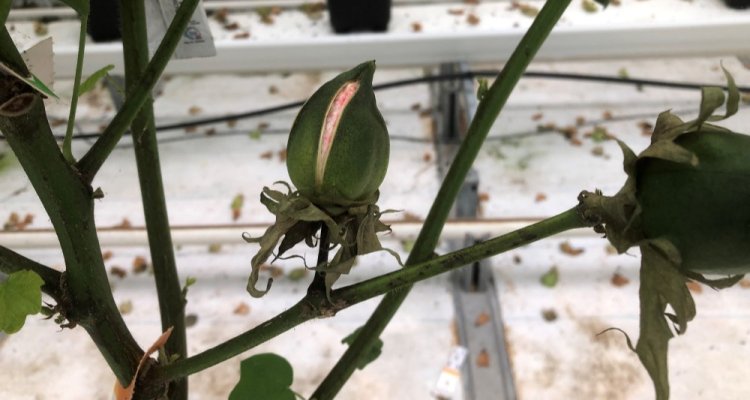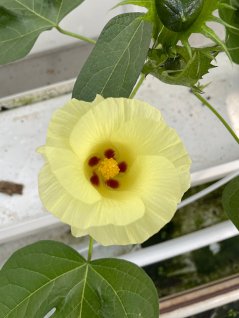Wageningen, The Netherlands
December 3, 2021

Cotton is one of the largest agricultural products in the world. Worldwide, more than 20 million tons are produced annually. Growers use a relatively large amount of water, nutrients, crop protection agents and so-called 'inhibitors'. The Business Unit Greenhouse Horticulture and Flower Bulbs of Wageningen University & Research is investigating whether cotton cultivation can take place more sustainably in greenhouses, and thus whether it is possible in the long term to produce clothing from Dutch cotton.

In a greenhouse, controlled cultivation is possible with less use of raw materials. In addition, water and nutrients can be collected and reused, for example. That is why last year seeds of eight different cotton varieties were sown in a greenhouse at the research location in Bleiswijk. Since then, a Greek variant has grown - Greece is a prominent cotton country. In addition, some high-quality varieties are grown. These ensure high-quality cotton, and it is precisely in that segment that there is still room on the international cotton market.
The aim of the trial is to investigate how as many kilograms of cotton per square meter as possible can be grown, with the highest possible value. This makes it possible to recoup the additional costs for cultivation in a greenhouse. This production can be optimized in various ways, for example by allowing the crop to grow higher, through a higher planting density or through more cultivation rounds per year.
The research into the cultivation of cotton is financed by the company Dutch Cotton BV.
Nederlands katoen uit de kas?
Katoen is een van de grootste landbouwproducten ter wereld. Wereldwijd wordt er jaarlijks ruim 20 miljoen ton geproduceerd. Daarbij gebruiken kwekers relatief veel water, voedingsstoffen, gewasbeschermingsmiddelen en zogenoemde 'remstoffen'. De Business Unit Glastuinbouw en Bloembollen van Wageningen University & Research onderzoekt of in kassen de katoenteelt duurzamer kan plaatsvinden, en dus of het mogelijk is op termijn kleding van Nederlands katoen te produceren.
In een kas is een gecontroleerde teelt mogelijk met minder gebruik van grondstoffen. Bovendien kunnen water en voedingsstoffen opgevangen en hergebruikt worden. Daarom werden afgelopen jaar in een kas op de onderzoekslocatie in Bleiswijk zaden van acht verschillende katoenrassen gezaaid. Zo groeit er sindsdien een Griekse variant - Griekenland is namelijk een prominent katoenland. Daarnaast groeien er enkele hoogwaardige rassen. Deze zorgen voor kwalitatief goed katoen en juist in dat segment is nog ruimte op de internationale katoenmarkt.
Doel van de proef is onderzoeken hoe zo veel mogelijk kilogram katoen per vierkante meter geteeld kan worden, met een zo hoog mogelijke waarde. Daarmee zijn de meerkosten voor de teelt in een kas terug te verdienen. Die productie is op verschillende manieren te optimaliseren, bijvoorbeeld door het gewas hoger te laten groeien, door een hogere plantdichtheid of door meer teeltrondes per jaar.
Het onderzoek naar de teelt van katoen wordt gefinancierd door het bedrijf Dutch Cotton BV.